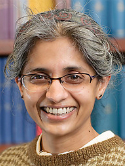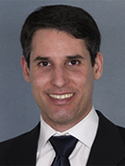| Abstract: |
Background Melanocytic naevi are an important risk factor for melanoma. Naevi with distinct dermoscopic patterns can differ in size, distribution and host pigmentation characteristics. Objectives We examined MC1R and 85 other candidate loci in a cohort of children to test the hypothesis that the development and dermoscopic type of naevi are modulated by genetic variants. Methods Buccal DNAs were obtained from a cohort of 353 fifth graders (mean age 10·4 years). Polymorphisms were chosen based on a known or anticipated role in naevi and melanoma. Associations between single-nucleotide polymorphisms (SNPs) and baseline naevus count were determined by multivariate regression adjusting for sex, race/ethnicity and sun sensitivity. Dermoscopic images were available for 853 naevi from 290 children. Associations between SNPs and dermoscopic patterns were determined by polytomous regression. Results Four SNPs were significantly associated with increasing (IRF4) or decreasing (PARP1, CDK6 and PLA2G6) naevus count in multivariate shrinkage analyses with all SNPs included in the model; IRF4 rs12203952 showed the strongest association with log naevus count (relative risk 1·56, P < 0·001). Using homogeneous naevi as the reference, IRF4 rs12203952 and four other SNPs in TERT, CDKN1B, MTAP and PARP1 were associated with either globular or reticular dermoscopic patterns (P < 0·05). Conclusions Our results provide evidence that subsets of naevi defined by dermoscopic patterns differ in their associations with germline genotypes and support the hypothesis that dermoscopically defined subsets of naevi are biologically distinct. These results require confirmation in larger cohorts. If confirmed, these findings will improve the current knowledge of naevogenesis and assist in the identification of individuals with high-risk phenotypes. What's already known about this topic? Total-body naevus counts and dysplastic naevi are important risk factors for melanoma. Naevi with distinct dermoscopic patterns differ in size, anatomical and age distribution, and host pigmentation characteristics. What does this study add? We have identified associations between genetic variants and the number of naevi in early age. We have identified associations between host genetics and the dermoscopic pattern of naevi, supporting the hypothesis that naevi distinguished by their dermoscopic pattern represent distinct biological subsets. © 2014 The Authors. British Journal of Dermatology published by John Wiley & Sons Ltd on behalf of British Association of Dermatologists. |










